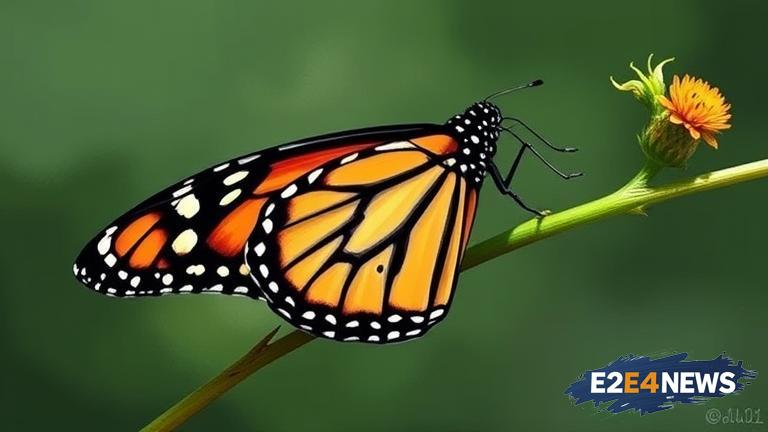The monarch butterfly, an iconic species known for its distinctive orange and black wings, has been facing a decline in population over the past few decades. However, a recent count in New Hampshire has revealed a surge in monarch caterpillar populations, sparking hopes for the species’ revival. The count, which was conducted by a team of researchers and volunteers, found a significant increase in the number of monarch caterpillars in the state. This increase is being seen as a positive sign for the species, which has been struggling to recover from habitat loss, pesticide use, and climate change. The monarch butterfly is a vital part of the ecosystem, playing a crucial role in pollination and serving as a food source for other animals. The decline of the monarch population has been a concern for conservationists and scientists, who have been working to protect and restore habitats for the species. The recent count in New Hampshire is a promising sign that these efforts may be paying off. The monarch caterpillar count was conducted in various locations throughout the state, including nature reserves, parks, and gardens. The researchers and volunteers involved in the count used a combination of methods, including visual surveys and netting, to collect data on the caterpillar populations. The results of the count showed a significant increase in the number of monarch caterpillars, with some areas seeing an increase of up to 50% compared to previous years. This increase is being attributed to a combination of factors, including the creation of monarch-friendly habitats and the reduction of pesticide use. The creation of monarch-friendly habitats, such as milkweed gardens, has been a key factor in the increase of monarch caterpillar populations. Milkweed is a vital food source for monarch caterpillars, and the creation of these gardens has provided a much-needed source of nutrition for the species. The reduction of pesticide use has also been a key factor in the increase of monarch caterpillar populations. Pesticides have been shown to have a devastating impact on monarch populations, and the reduction of their use has helped to create a safer environment for the species. The increase in monarch caterpillar populations is not only a positive sign for the species, but also for the ecosystem as a whole. The monarch butterfly plays a vital role in pollination, and the increase in their population could have a positive impact on the health of plants and other animals. The recent count in New Hampshire is a promising sign that conservation efforts may be paying off, and that the monarch species may be on the road to recovery. However, more work needs to be done to ensure the long-term survival of the species. This includes the continued creation of monarch-friendly habitats, the reduction of pesticide use, and the protection of existing habitats. The conservation of the monarch species is a complex issue, and will require the efforts of individuals, organizations, and governments. By working together, it is possible to create a safer environment for the monarch species, and to ensure their survival for generations to come. The recent count in New Hampshire is a positive sign, but it is only the beginning. More research and conservation efforts are needed to ensure the long-term survival of the monarch species. The monarch butterfly is an iconic species, and its loss would have a significant impact on the ecosystem. It is up to us to take action to protect the species, and to ensure their survival for generations to come.
